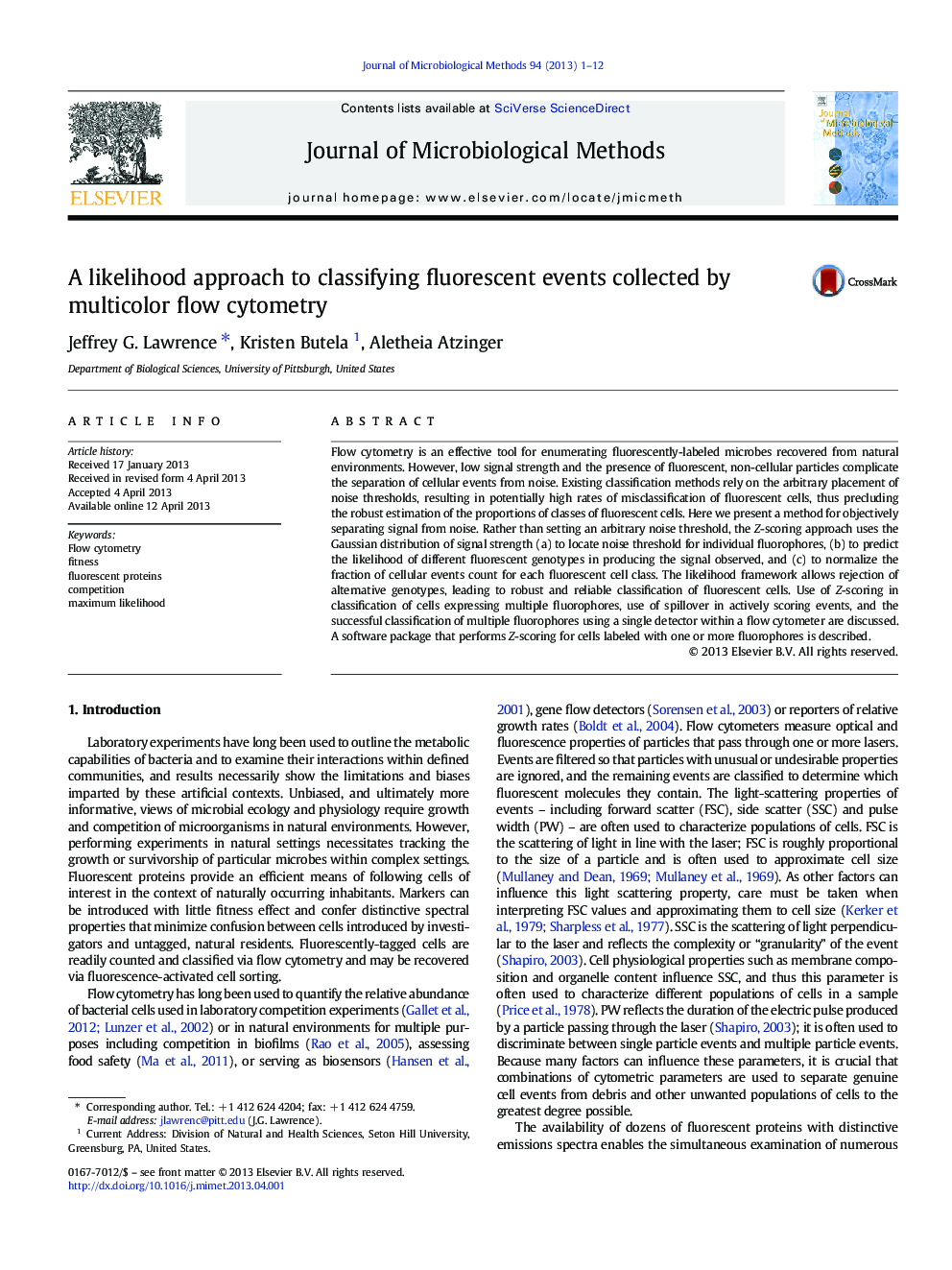| Article ID | Journal | Published Year | Pages | File Type |
|---|---|---|---|---|
| 2090145 | Journal of Microbiological Methods | 2013 | 12 Pages |
•Z-scoring robustly classifies fluorescent events in the face of weak signal.•Z-scoring assesses the likelihood of each genotype in producing a signal.•Likelihoods rely on the Gaussian distribution of signal strength.•Z-scoring may classify multiple fluorophores on a single detector.•A software package that performs Z-scoring is described.
Flow cytometry is an effective tool for enumerating fluorescently-labeled microbes recovered from natural environments. However, low signal strength and the presence of fluorescent, non-cellular particles complicate the separation of cellular events from noise. Existing classification methods rely on the arbitrary placement of noise thresholds, resulting in potentially high rates of misclassification of fluorescent cells, thus precluding the robust estimation of the proportions of classes of fluorescent cells. Here we present a method for objectively separating signal from noise. Rather than setting an arbitrary noise threshold, the Z-scoring approach uses the Gaussian distribution of signal strength (a) to locate noise threshold for individual fluorophores, (b) to predict the likelihood of different fluorescent genotypes in producing the signal observed, and (c) to normalize the fraction of cellular events count for each fluorescent cell class. The likelihood framework allows rejection of alternative genotypes, leading to robust and reliable classification of fluorescent cells. Use of Z-scoring in classification of cells expressing multiple fluorophores, use of spillover in actively scoring events, and the successful classification of multiple fluorophores using a single detector within a flow cytometer are discussed. A software package that performs Z-scoring for cells labeled with one or more fluorophores is described.
Graphical abstractFigure optionsDownload full-size imageDownload as PowerPoint slide
